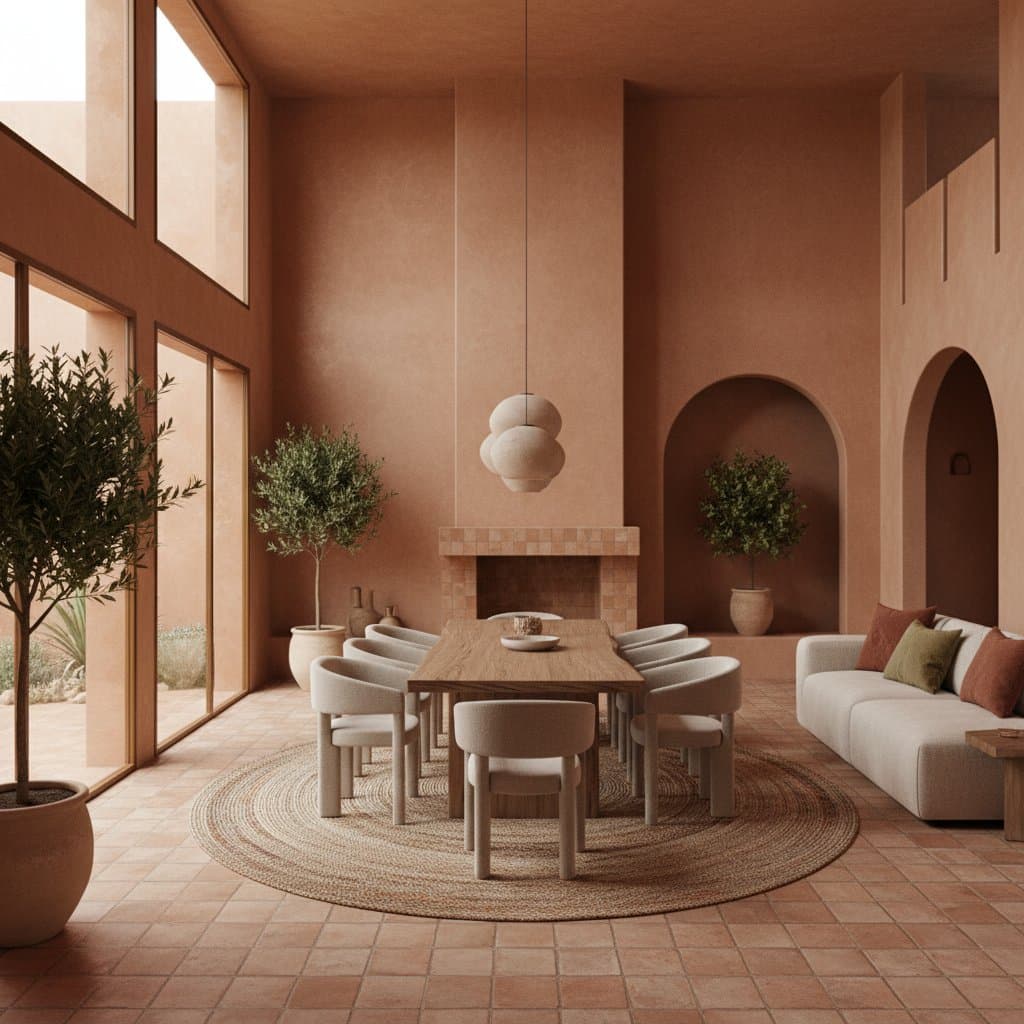Why Terracotta and Clay Create Timeless Warmth
Terracotta and clay materials infuse interiors with a sense of enduring warmth. These natural elements draw from the earth's palette, offering hues that range from soft ochres to deep rusts. Homeowners appreciate how they foster serene environments that feel both inviting and rooted in tradition.
The Enduring Appeal of Natural Materials
Terracotta and clay have served as building blocks for civilizations throughout history. Ancient structures in the Mediterranean and Asia showcase their resilience against time and elements. Today, designers revive these materials to counter the sterility of modern synthetic finishes.
Their appeal lies in inherent qualities. Terracotta tiles, fired at high temperatures, develop a subtle patina over years of use. Clay plasters, mixed with natural fibers, allow walls to breathe, regulating humidity in living spaces.
This timeless quality stems from authenticity. Unlike fleeting trends, these materials age gracefully, gaining character without demanding replacement.
Benefits for Modern Interiors
Warmth emerges as the primary draw. The earthy tones absorb light softly, creating cozy atmospheres in rooms that might otherwise feel cold. In living areas, terracotta floors provide a gentle underfoot sensation, ideal for high-traffic zones.
Texture adds depth and interest. Hand-formed clay bricks feature irregular surfaces that catch the eye and invite touch. Such details prevent spaces from appearing flat, enhancing visual harmony.
Sustainability ranks high among advantages. Sourced locally in many regions, these materials reduce transportation emissions. Production processes consume less energy than manufacturing glass or metal alternatives, aligning with eco-conscious living.
Durability ensures long-term value. Terracotta resists wear from daily activities, while clay renders maintain flexibility to avoid cracking. Both options prove practical for families seeking beauty without constant upkeep.
Incorporating Terracotta and Clay into Your Home
Start with foundational elements like flooring. Select terracotta tiles in matte finishes for kitchens or entryways. Lay them in a herringbone pattern to add subtle sophistication without overwhelming the space.
For walls, apply clay plaster in bedrooms or hallways. Choose neutral shades to complement existing furniture, or layer with limewash for a fresco-like effect. This technique suits DIY enthusiasts, as basic tools suffice for even application.
Experiment with accents for broader impact. Install clay shelves in bathrooms to hold towels and toiletries. Use terracotta pots as planters in sunlit corners, bringing outdoor vitality indoors.
Balance these elements with lighter tones. Pair warm clay walls with crisp white trim to prevent heaviness. In larger rooms, mix tile sizes to create zones, such as a terracotta rug area in open-plan living spaces.
Consider maintenance from the outset. Seal terracotta surfaces with natural oils to protect against stains. Refresh clay finishes annually with simple dusting, preserving their original luster.
Practical Tips for Selection and Installation
Evaluate your climate when choosing products. In humid areas, opt for breathable clay plasters to prevent mold. For dry regions, unglazed terracotta tiles perform best, absorbing excess moisture.
Source materials from reputable suppliers who prioritize ethical mining. Verify certifications for low-VOC emissions, ensuring healthy indoor air quality.
Hire professionals for complex installations, such as custom clay molding. They can advise on load-bearing capacities for structural uses, like terracotta cladding on exterior walls.
Budget wisely by starting small. A single feature wall in clay transforms a room affordably, offering a preview before full commitment.
Embracing Earthy Elegance in Everyday Living
Terracotta and clay transform ordinary homes into sanctuaries of natural beauty. They connect inhabitants to the environment, promoting well-being through tactile and visual comfort. As these materials integrate seamlessly, spaces evolve into personal havens that endure across seasons and styles.
The result proves rewarding: interiors that feel alive and nurturing. Families discover joy in the subtle shifts of light on textured surfaces, fostering lasting appreciation for grounded design.
